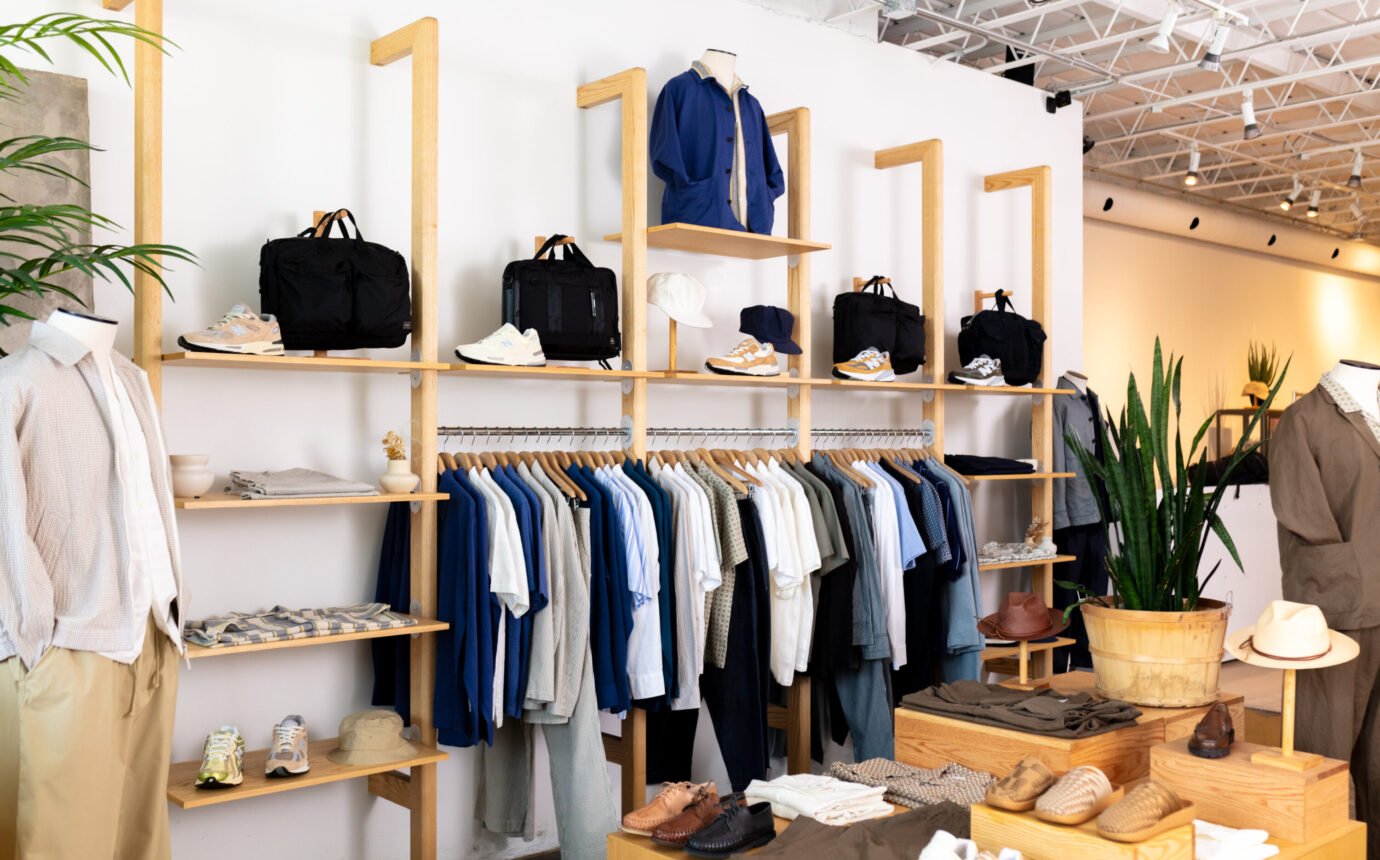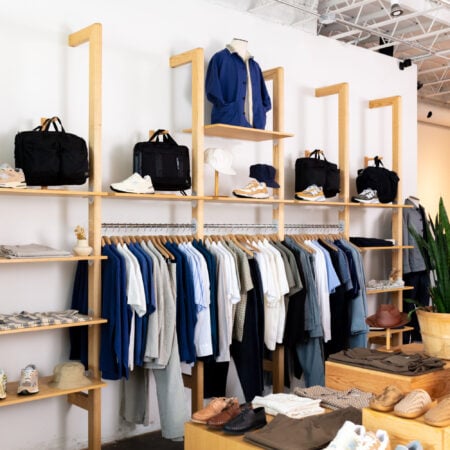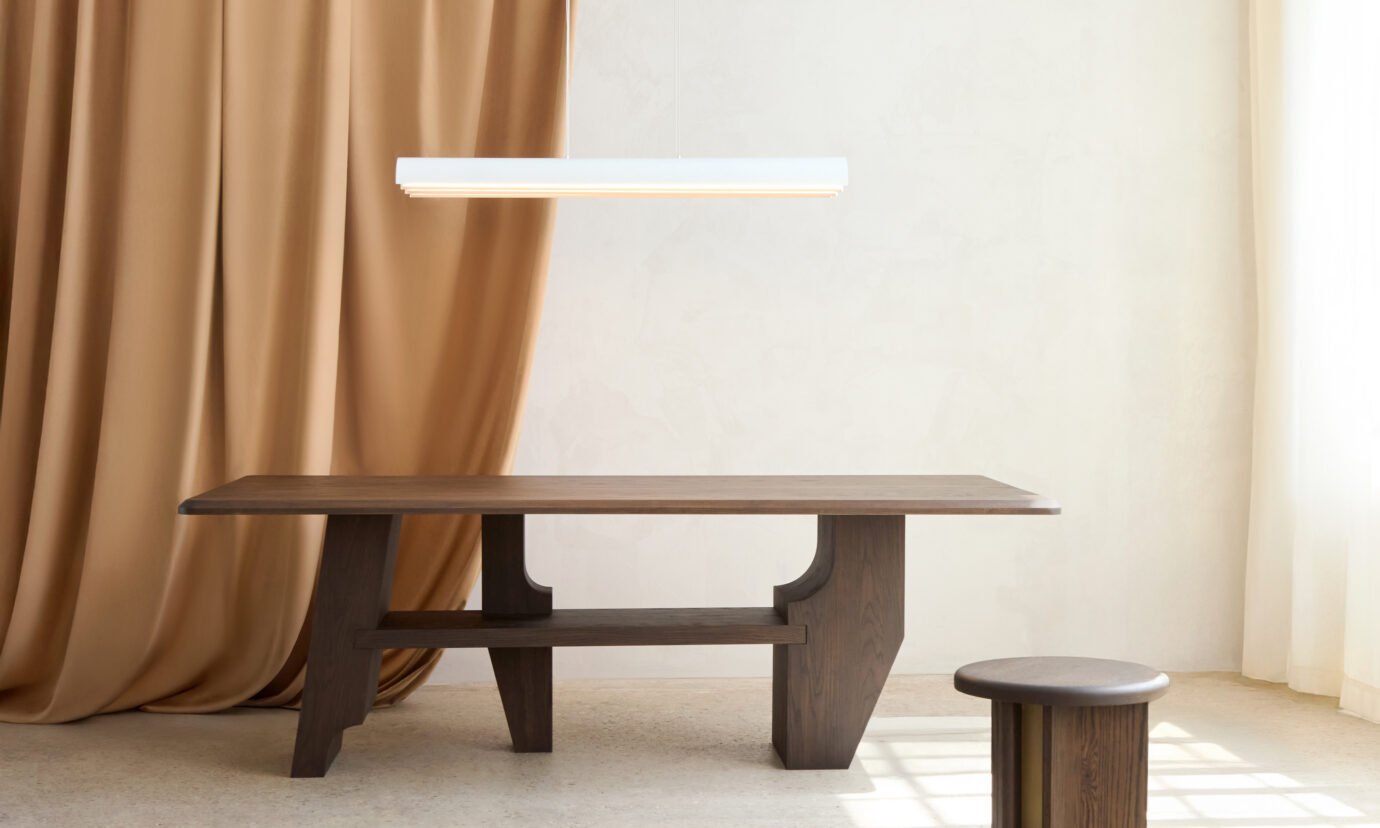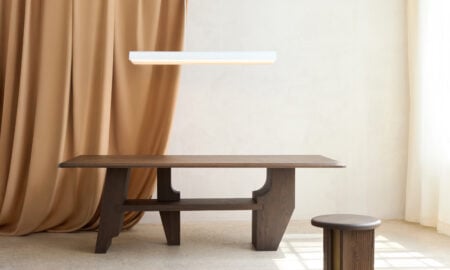Menswear Meets Modern Design at Uncle Otis


This contemporary clothing store blends style and spatial design to create a refined retail experience
When you think of legendary English rock band The Cure, you may not immediately think of Uncle Otis, a contemporary menswear shop in Chinatown. But for those in the know, the connection runs deep. Founded in 1991 by The Cure’s longtime keyboardist Roger O’Donnell—and named after soul legend Otis Redding—the boutique has evolved into a staple for timeless, design-forward menswear. Decades later, boys still don’t cry, but they do shop stylishly at 329 Spadina (it may be a catchy tune but it’s bad for business).
At the original location in Yorkville (where Uncle Otis had been for 27 years before relocating to their Spadina location roughly 6 years ago), the shop’s wardrobe mixed modern-contemporary looks with streetwear. Think: Stüssy, Supreme, Noah—plus others, like the UK-based brand Universal Works. Now, Uncle Otis’ style reflects a more elevated edge, and champions labels like British luxury brand Barbour and outdoor apparel company Gramicci, among others.
“We have our roots in streetwear, but we’ve matured along with our audiences,” says Vince Lai, Uncle Otis buyer and store manager.
Recently, the shop interior got a refresh. Thanks to custom millwork by Studio Archive, the space now features a new modular shelving system in tinted white ash-wood that can accommodate an array of configurations. With a fully removable front-section, the team can add shelves and rails wherever and whenever they need, allowing for completely new set-ups for pop-ups and events.
Working with owner Donell Enns, the goal was a dramatic feature wall (9’ tall and five 30” columns wide) that would display current collections with a utilitarian edge. And featuring clean lines and quality materials (custom aluminium hardware), the updated interior meets Uncle Otis’ style standards: personal, functional and timeless. It’s no surprise the shop is a favourite of Toronto’s architecture and design community.
“Contemporary menswear and interior design come hand in hand. The common language is purposeful design, thoughtful details, and materials chosen to last. Both are quiet reflections of who you are and what you value.”























